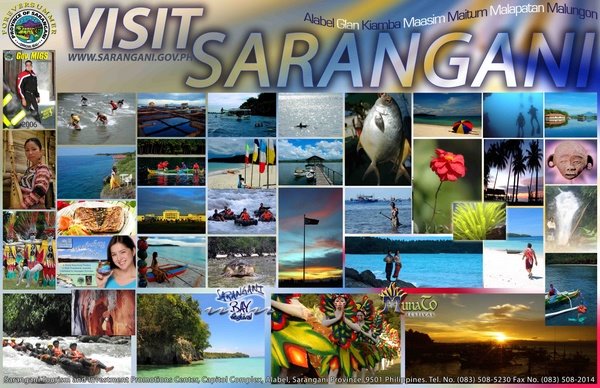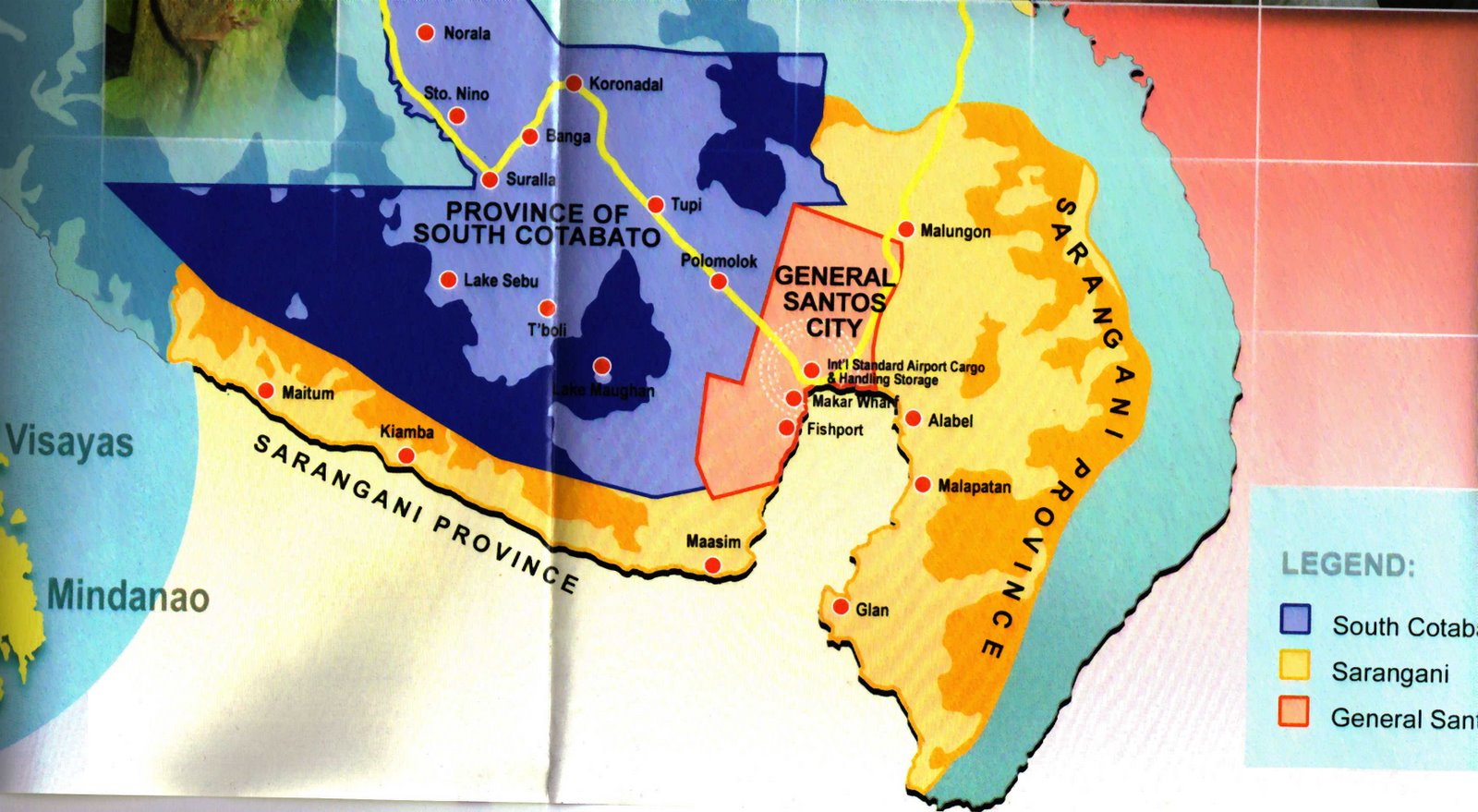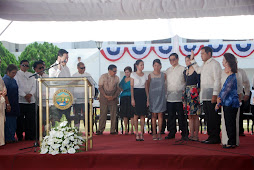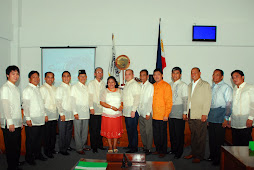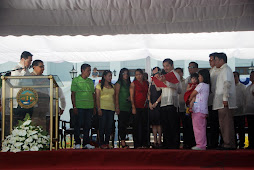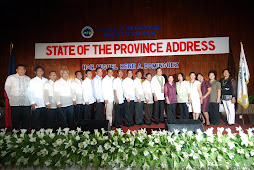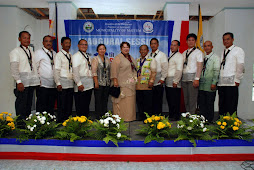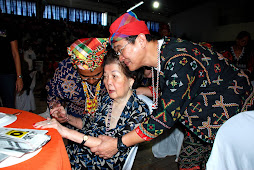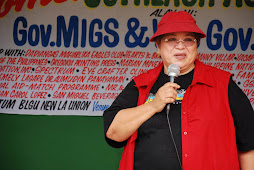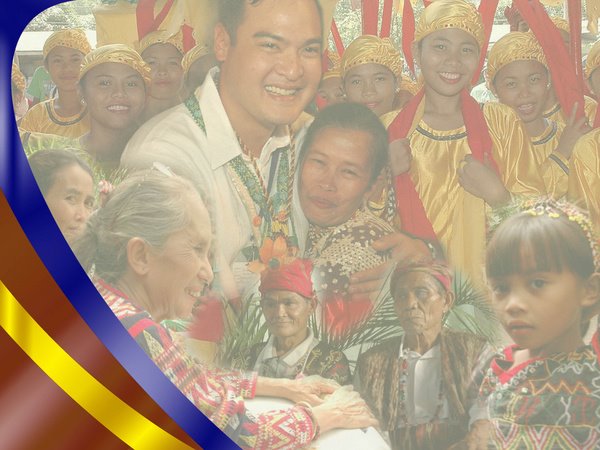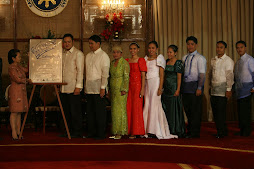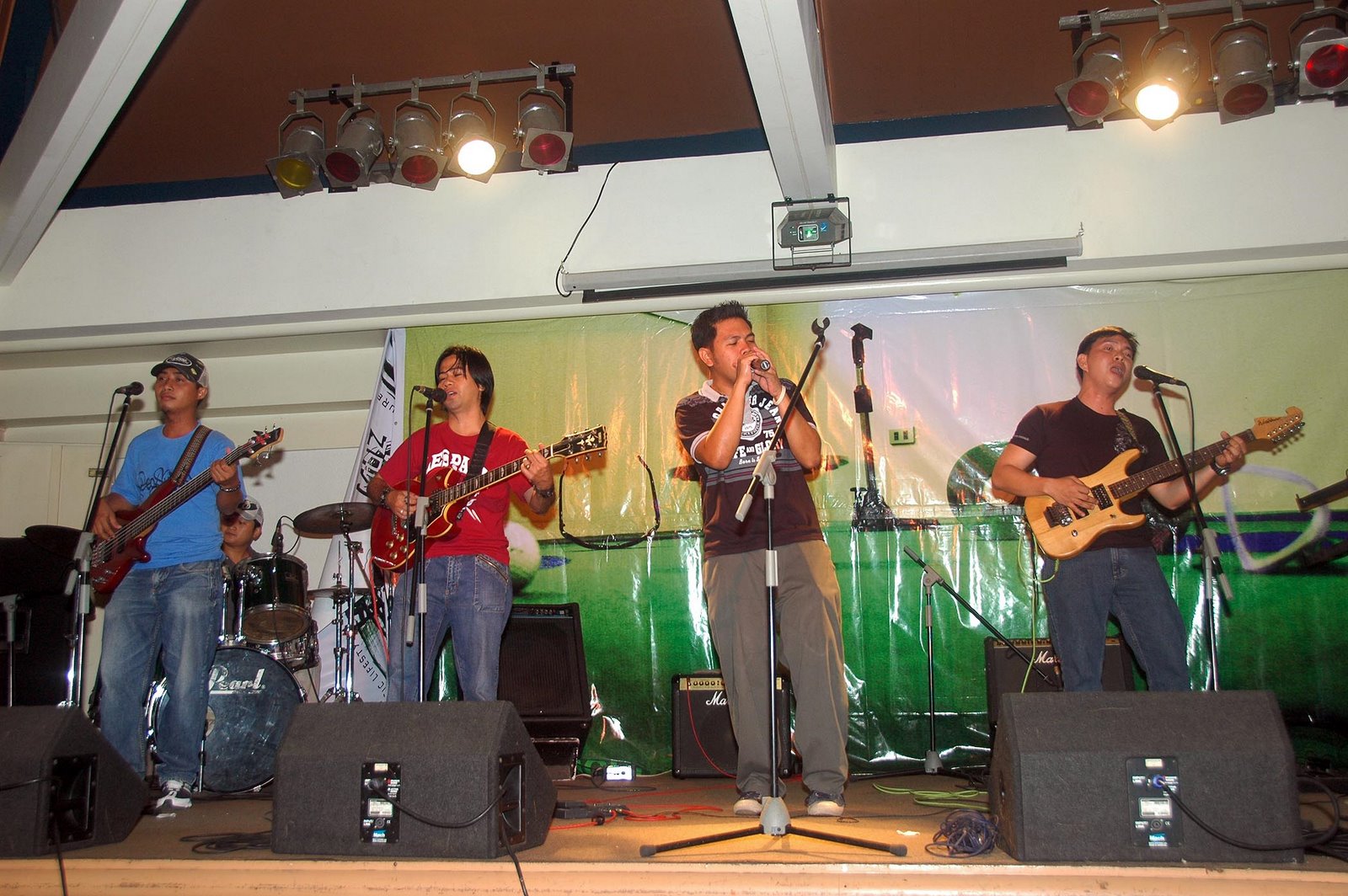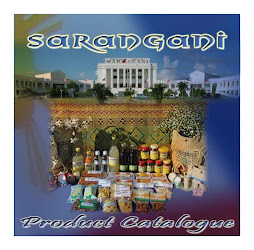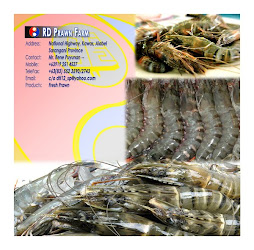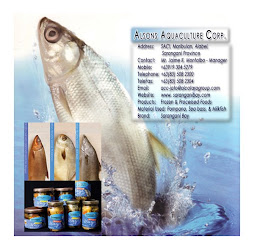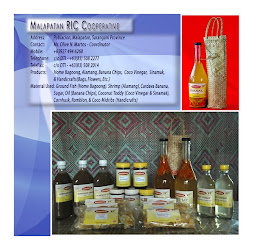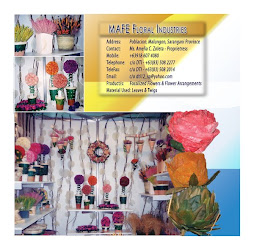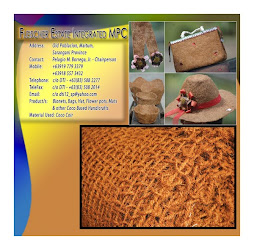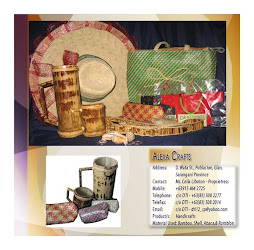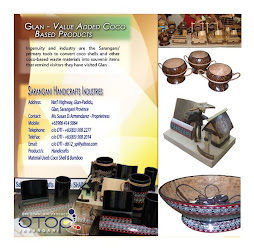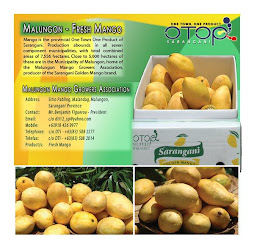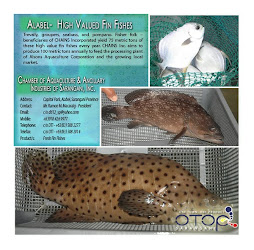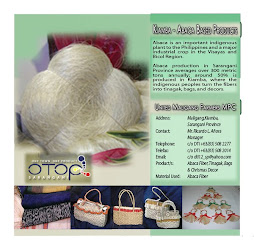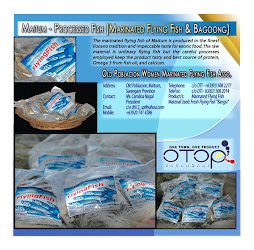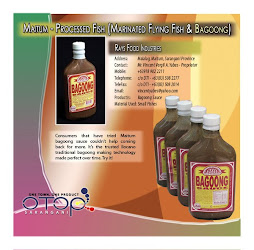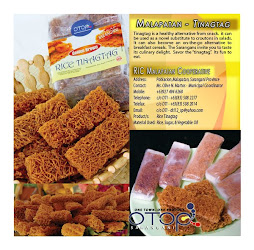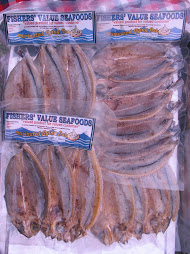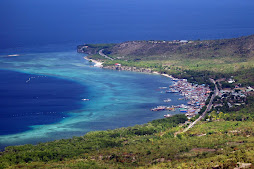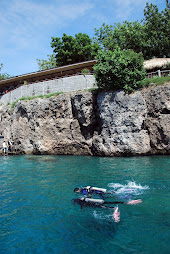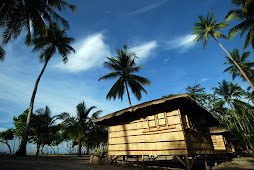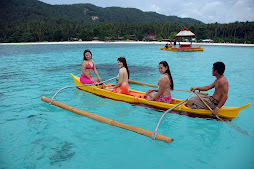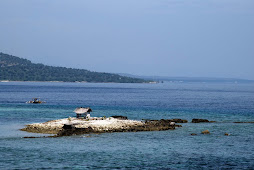 ALABEL, Sarangani (February 7, 2011) – Acting Governor Steve Chiongbian Solon consults beneficiaries with provincial social welfare and development officer Hermelo Latoja at the turnover ceremony of Springhill Village’s 107 housing units in barangay Spring Friday, February 4. Springhill Village is a joint shelter assistance project of the provincial and municipal government and the Department of Social Welfare and Development- XII. (Photo by Romina Rabina/SARANGANI INFORMATION OFFICE)
ALABEL, Sarangani (February 7, 2011) – Acting Governor Steve Chiongbian Solon consults beneficiaries with provincial social welfare and development officer Hermelo Latoja at the turnover ceremony of Springhill Village’s 107 housing units in barangay Spring Friday, February 4. Springhill Village is a joint shelter assistance project of the provincial and municipal government and the Department of Social Welfare and Development- XII. (Photo by Romina Rabina/SARANGANI INFORMATION OFFICE)
Monday, February 7, 2011
Springhill Village
 ALABEL, Sarangani (February 7, 2011) – Acting Governor Steve Chiongbian Solon consults beneficiaries with provincial social welfare and development officer Hermelo Latoja at the turnover ceremony of Springhill Village’s 107 housing units in barangay Spring Friday, February 4. Springhill Village is a joint shelter assistance project of the provincial and municipal government and the Department of Social Welfare and Development- XII. (Photo by Romina Rabina/SARANGANI INFORMATION OFFICE)
ALABEL, Sarangani (February 7, 2011) – Acting Governor Steve Chiongbian Solon consults beneficiaries with provincial social welfare and development officer Hermelo Latoja at the turnover ceremony of Springhill Village’s 107 housing units in barangay Spring Friday, February 4. Springhill Village is a joint shelter assistance project of the provincial and municipal government and the Department of Social Welfare and Development- XII. (Photo by Romina Rabina/SARANGANI INFORMATION OFFICE)
Saturday, February 5, 2011
Inmates thank Gov. Migs
 ALABEL, Sarangani (February 5, 2011) – Inmate Mike Alfonso speaks in behalf of his inmates thanking Governor Migs and the provincial government particularly on the justice On Wheels project which provided speedy justice to overstaying inmates and better and healthier environment inside the jail. A community outreach was conducted by office heads and provincial employees at the provincial jail in celebration of Governor Migs Dominguez 34th birthday Saturday, February 5. (Ritchie Tongo/SARANGANI INFORMATION OFFICE)
ALABEL, Sarangani (February 5, 2011) – Inmate Mike Alfonso speaks in behalf of his inmates thanking Governor Migs and the provincial government particularly on the justice On Wheels project which provided speedy justice to overstaying inmates and better and healthier environment inside the jail. A community outreach was conducted by office heads and provincial employees at the provincial jail in celebration of Governor Migs Dominguez 34th birthday Saturday, February 5. (Ritchie Tongo/SARANGANI INFORMATION OFFICE)
Gov. Migs's 34th birthday
 ALABEL, Sarangani (February 5, 2011) – Executive Assistant Hanafi Ibrahim delivers Governor Migs’ thanksgiving and inspirational message to inmates as office heads led provincial employees to a community outreach at the provincial jail in celebration of Governor Migs Dominguez’ 34th birthday Saturday, February 5. (Ritchie Tongo/SARANGANI INFORMATION OFFICE)
ALABEL, Sarangani (February 5, 2011) – Executive Assistant Hanafi Ibrahim delivers Governor Migs’ thanksgiving and inspirational message to inmates as office heads led provincial employees to a community outreach at the provincial jail in celebration of Governor Migs Dominguez’ 34th birthday Saturday, February 5. (Ritchie Tongo/SARANGANI INFORMATION OFFICE)
Gift to inmates
 ALABEL, Sarangani (February 5, 2011) – Inmate Mike Alfonso receives from Sarangani Provincial Employees Union (SPEU) president Bobby Saya-ang sports equipment and slippers from the union as office heads led provincial employees to a community outreach at the provincial jail in celebration of Governor Migs Dominguez’ 34th birthday Saturday, February 5. (Russel Delvo/SARANGANI INFORMATION OFFICE)
ALABEL, Sarangani (February 5, 2011) – Inmate Mike Alfonso receives from Sarangani Provincial Employees Union (SPEU) president Bobby Saya-ang sports equipment and slippers from the union as office heads led provincial employees to a community outreach at the provincial jail in celebration of Governor Migs Dominguez’ 34th birthday Saturday, February 5. (Russel Delvo/SARANGANI INFORMATION OFFICE)
Friday, February 4, 2011
Blaan School
 MALUNGON, Sarangani (February 4, 2011) – Pupils get ready to welcome visitors at the school entrance with a bamboo-made man bridge. Local officials, education and language experts led the launching of Lamlifew Elementary School as pilot mother tongue- based multi-lingual education (MTB-MLE) of the province Friday (February 4). (Cocoy Sexcion/SARANGANI INFORMATION OFFICE)
MALUNGON, Sarangani (February 4, 2011) – Pupils get ready to welcome visitors at the school entrance with a bamboo-made man bridge. Local officials, education and language experts led the launching of Lamlifew Elementary School as pilot mother tongue- based multi-lingual education (MTB-MLE) of the province Friday (February 4). (Cocoy Sexcion/SARANGANI INFORMATION OFFICE)
Lamlifew pupils
 MALUNGON, Sarangani (February 4, 2011) – In their traditional dress, pupils of Lamlifew Elementary School sing the national anthem in an open stage landscaped with white stones from the Bluan river in front of the school. Local officials, education and language experts led the launching of Lamlifew Elementary School as pilot mother tongue- based multi-lingual education (MTB-MLE) of the province Friday (February 4). (Cocoy Sexcion/SARANGANI INFORMATION OFFICE)
MALUNGON, Sarangani (February 4, 2011) – In their traditional dress, pupils of Lamlifew Elementary School sing the national anthem in an open stage landscaped with white stones from the Bluan river in front of the school. Local officials, education and language experts led the launching of Lamlifew Elementary School as pilot mother tongue- based multi-lingual education (MTB-MLE) of the province Friday (February 4). (Cocoy Sexcion/SARANGANI INFORMATION OFFICE)
Lawin dance
 MALUNGON, Sarangani (February 4, 2011) – Pupils of the Lamlifew Elementary School perform the ral kafi (lawin dance) to entertain their visitors. Local officials, education and language experts led the launching of Lamlifew Elementary School as pilot mother tongue- based multi-lingual education (MTB-MLE) of the province Friday (February 4). (Cocoy Sexcion/SARANGANI INFORMATION OFFICE)
MALUNGON, Sarangani (February 4, 2011) – Pupils of the Lamlifew Elementary School perform the ral kafi (lawin dance) to entertain their visitors. Local officials, education and language experts led the launching of Lamlifew Elementary School as pilot mother tongue- based multi-lingual education (MTB-MLE) of the province Friday (February 4). (Cocoy Sexcion/SARANGANI INFORMATION OFFICE)
Assistance to MTB-MLE
 MALUNGON, Sarangani (February 4, 2011) – Board member Eleanor Saguiguit urges the community to protect and preserve the cultural heritage of the indigenous Blaan particularly in Lamlifew and swears to seek more assistance for them. Local officials, education and language experts led the launching of Lamlifew Elementary School as pilot mother tongue- based multi-lingual education (MTB-MLE) of the province Friday (February 4). (Cocoy Sexcion/SARANGANI INFORMATION OFFICE)
MALUNGON, Sarangani (February 4, 2011) – Board member Eleanor Saguiguit urges the community to protect and preserve the cultural heritage of the indigenous Blaan particularly in Lamlifew and swears to seek more assistance for them. Local officials, education and language experts led the launching of Lamlifew Elementary School as pilot mother tongue- based multi-lingual education (MTB-MLE) of the province Friday (February 4). (Cocoy Sexcion/SARANGANI INFORMATION OFFICE)
Mother tongue-based multi-lingual education
 MALUNGON, Sarangani (February 4, 2011) – Department of Education division language coordinator of Sarangani Elizabeth Torres expounds the nature and importance of mother tongue- based multi-lingual education (MTB-MLE) in the learning processes of children. Local officials, education and language experts led the launching of Lamlifew Elementary School as pilot MTB-MLE of the province Friday (February 4). (Cocoy Sexcion/SARANGANI INFORMATION OFFICE)
MALUNGON, Sarangani (February 4, 2011) – Department of Education division language coordinator of Sarangani Elizabeth Torres expounds the nature and importance of mother tongue- based multi-lingual education (MTB-MLE) in the learning processes of children. Local officials, education and language experts led the launching of Lamlifew Elementary School as pilot MTB-MLE of the province Friday (February 4). (Cocoy Sexcion/SARANGANI INFORMATION OFFICE)
My Sarangani hymn
 MALUNGON, Sarangani (February 4, 2011) – Pupils of Lamlifew Elementary School sing an original composition of Blaan elder Herminia Lakna called E E Sarangani, (My Sarangani) in the Blaan dialect. Local officials, education and language experts led the launching of Lamlifew Elementary School as pilot mother tongue- based multi-lingual education (MTB-MLE) of the province Friday (February 4). (Cocoy Sexcion/SARANGANI INFORMATION OFFICE)
MALUNGON, Sarangani (February 4, 2011) – Pupils of Lamlifew Elementary School sing an original composition of Blaan elder Herminia Lakna called E E Sarangani, (My Sarangani) in the Blaan dialect. Local officials, education and language experts led the launching of Lamlifew Elementary School as pilot mother tongue- based multi-lingual education (MTB-MLE) of the province Friday (February 4). (Cocoy Sexcion/SARANGANI INFORMATION OFFICE)
Welcome dance
 MALUNGON, Sarangani (February 4, 2011) – Ye or Blaan mothers perform a welcome dance as visitors and guests arrive at the village. Local officials, education and language experts led the launching of Lamlifew Elementary School as pilot mother tongue- based multi-lingual education (MTB-MLE) of the province Friday (February 4). (Cocoy Sexcion/SARANGANI INFORMATION OFFICE)
MALUNGON, Sarangani (February 4, 2011) – Ye or Blaan mothers perform a welcome dance as visitors and guests arrive at the village. Local officials, education and language experts led the launching of Lamlifew Elementary School as pilot mother tongue- based multi-lingual education (MTB-MLE) of the province Friday (February 4). (Cocoy Sexcion/SARANGANI INFORMATION OFFICE)
Blaan school pilots mother tongue-based education
MALUNGON, Sarangani (February 4, 2011) – Local officials, education and language experts led the launching of Lamlifew Elementary School as pilot mother tongue- based multi-lingual education (MTB-MLE) of the province Friday (February 4).
Lamlifew is a Blaan village at the town’s outskirts. Blaan is the name of the people and the language of the largest indigenous group in Sarangani that finally sought indigenized curriculum from the Department of Education.
“Basically, MTB-MLE is integrating the indigenous culture in the regular education curriculum using the first language (Blaan),” DepEd- Sarangani division language coordinator Elizabeth Torres said.
As an example, Torres said teachers can teach the English alphabet in Blaan accent and intonation and then do it in English as an international language.
“MTB-MLE also includes teaching traditional practices that have cultural significance to them.”
Part of the indigenized curriculum through MTB-MLE is the integration of Blaan’s Tabih (traditional clothing), dances and songs to the pupils.
“Sarangani has three variations of the Blaan language from the three municipalities of Glan, Malapatan and Malungon. We will also come up with a phrase book and try to investigate their differences,” Torres added.
Lamlifew has a women’s association aimed at the preservation and development of their cultural heritage and traditional handicrafts.
Lamlifew as a complete elementary started in 1997 with teachers come and go because of their inadequacy in number and their willingness to be assigned to far-flung areas.
The school was built in 1982, then a primary school, through the effort of tribal leader Kalingo Maluma who brought the proposal to Malacanang by himself. Loida Esperanza became the first school head of the school in 1997.
Malungon West District supervisor Nora Nerpiol said the education department has been supporting the school since then through physical and academic means. Lamlifew has the most number of professionals in Barangay Datal Tampal.
Board member Eleanor Saguiguit said the Growth with Equity in Mindanao- (GEM) is on its way for the construction of a footbridge along Bluan river in front of the school where 98 percent of the pupils are crossing everyday to get to school.
“We will also look for partners for the community to fund their traditional craftsmanship like basket-making and beads making,” Saguiguit said.
Saguiguit recalled the village, roughly 1,600 hectares of pasture land, was given to her as a dowry by her uncle-in- law when she got married in 1977. She afforded to refuse ownership of the land after seeing the presence of the community there, she said.
In 2007, the province’s Indigenous People’s Development Program (IPDP) helped Lamlifew build a living museum and identified Lamlifew Elementary School as a School of Living Tradition (SLT).
Rosie Alcantara Dominguez, mother of Governor Migs Dominguez, sponsored the technology transfer of silk weaving by Malaysian expert weavers to the Lamlifew Women’s Association.
In 2009, Beth Ditan, a master in the art of beads making from the community, taught Grades V and VI pupils the traditional craftsmanship. Japanese anthropologist Taku Kawamuta later funded the materials for beads making and traditional clothing after seeing the children in the internet.
With the MTB-MLE, the school will have a once-a- week IP day with community elders to teach the children songs, dances and handicrafts. (Russtum G. Pelima/SARANGANI INFORMATION OFFICE)
Lamlifew is a Blaan village at the town’s outskirts. Blaan is the name of the people and the language of the largest indigenous group in Sarangani that finally sought indigenized curriculum from the Department of Education.
“Basically, MTB-MLE is integrating the indigenous culture in the regular education curriculum using the first language (Blaan),” DepEd- Sarangani division language coordinator Elizabeth Torres said.
As an example, Torres said teachers can teach the English alphabet in Blaan accent and intonation and then do it in English as an international language.
“MTB-MLE also includes teaching traditional practices that have cultural significance to them.”
Part of the indigenized curriculum through MTB-MLE is the integration of Blaan’s Tabih (traditional clothing), dances and songs to the pupils.
“Sarangani has three variations of the Blaan language from the three municipalities of Glan, Malapatan and Malungon. We will also come up with a phrase book and try to investigate their differences,” Torres added.
Lamlifew has a women’s association aimed at the preservation and development of their cultural heritage and traditional handicrafts.
Lamlifew as a complete elementary started in 1997 with teachers come and go because of their inadequacy in number and their willingness to be assigned to far-flung areas.
The school was built in 1982, then a primary school, through the effort of tribal leader Kalingo Maluma who brought the proposal to Malacanang by himself. Loida Esperanza became the first school head of the school in 1997.
Malungon West District supervisor Nora Nerpiol said the education department has been supporting the school since then through physical and academic means. Lamlifew has the most number of professionals in Barangay Datal Tampal.
Board member Eleanor Saguiguit said the Growth with Equity in Mindanao- (GEM) is on its way for the construction of a footbridge along Bluan river in front of the school where 98 percent of the pupils are crossing everyday to get to school.
“We will also look for partners for the community to fund their traditional craftsmanship like basket-making and beads making,” Saguiguit said.
Saguiguit recalled the village, roughly 1,600 hectares of pasture land, was given to her as a dowry by her uncle-in- law when she got married in 1977. She afforded to refuse ownership of the land after seeing the presence of the community there, she said.
In 2007, the province’s Indigenous People’s Development Program (IPDP) helped Lamlifew build a living museum and identified Lamlifew Elementary School as a School of Living Tradition (SLT).
Rosie Alcantara Dominguez, mother of Governor Migs Dominguez, sponsored the technology transfer of silk weaving by Malaysian expert weavers to the Lamlifew Women’s Association.
In 2009, Beth Ditan, a master in the art of beads making from the community, taught Grades V and VI pupils the traditional craftsmanship. Japanese anthropologist Taku Kawamuta later funded the materials for beads making and traditional clothing after seeing the children in the internet.
With the MTB-MLE, the school will have a once-a- week IP day with community elders to teach the children songs, dances and handicrafts. (Russtum G. Pelima/SARANGANI INFORMATION OFFICE)
Wednesday, February 2, 2011
Sarangani joins International Year of Forests
MAASIM, sarangani (February 2, 2011) – The Provincial Environment and Natural Resources Office (PENRO) launches the international year of forests and its local campaign for environmental conservation and protection with Conal Holdings Corporation Wednesday (February 2).
PENRO’s Forest and Management Section (FMS) joined Conal’s agro-forestry project of 7,500 hectares in the hinterlands of Maasim instead of its tree-planting activity in Alabel seeing its more direct effect and bigger impact in the environment with its national re-greening program.
“These grasslands are generally acidic so we have to plant trees to protect our mountains and the highland communities like what you have here,” forester and FMS Chief Jesus Boja said.
“This year is the international year of forests so I hope we will all cooperate and do our part to protect our remaining forests by planting trees. This is an agro-forestry project by the DENR and Conal so with this, I thank the Conal Holdings (Corporation) for their concern to environment,” he added.
“There are 14,000 hectares of watershed area in Maasim that needs to be rehabilitated,” Conal project assurance manager Rommel Tomas Falgui said.
“7,220 hectares will be Conal’s reforestation project and 280 hectares we intended for the riverbank rehabilitation.”
The day was the turn-over ceremony of the two-classroom building to the Department of Education as “A Gift of donation from Conal to the Children of Langaran”.
In October last year, Conal started constructing a primary school in Langaran and another one in Lebe in partnership with the local government, after finding significant statistics of children not attending school.
“We are very happy that Conal and the Alcantara help us to have a school here in Langaran,” Kablacan barangay captain Allan Ambrad said. Neighboring Sitio Kyumad in barangay Amsipit has a complete elementary school but ten kilometers away from the community.
Langaran is a community of the indigenous Blaan and Tboli. The school site was donated by Eyoy Malo, a native of the place. Very remote to the town site at 22 kilometers from the main road, it is seldom reached by transportation and upland products are brought to the market by horse.
Langaran is 870 meters above sea level and the climate is still cold at high noon. The primary school has 117 Grade I pupils.
“I want to be an engineer someday and work in the city to help my parents,” 16-year old Grade I pupil Sadam Ontong said. Sadam’s parents plow a small farm planted with cassava and corn.
Three other 15 years old are among the 117 pupils attending Grade I in Langaran Primary School.
“Without the Conal, we don’t have a school here,” mayor Jose Zamorro said. Assistant Schools Division superintendent Isagani Cruz said DepEd- Sarangani will build an additional school building here next year.
Conrado Ladislawa and Alcantara Foundation, Incorporated, donated school uniform for the pupils last Christmas. Mahintana Foundation will donate chairs for the classrooms.
Langaran has 12 surrounding communities benefiting the Conal school. The school site is overlooking a portion of the Seguil riverbank rehabilitation area.
During the day, Conal and local officials led pupils to the ceremonial planting of 50 mahogany seedlings from Mahintana Foundation at the forest gutters near the school site.
Falgui said Conal will sponsor parent mentoring sessions in partnership with the province’s Quality Education for Sarangani Today (QUEST) to maximize community participation for the education of their children. (Russtum G. Pelima/SARANGANI INFORMATION OFFICE)
PENRO’s Forest and Management Section (FMS) joined Conal’s agro-forestry project of 7,500 hectares in the hinterlands of Maasim instead of its tree-planting activity in Alabel seeing its more direct effect and bigger impact in the environment with its national re-greening program.
“These grasslands are generally acidic so we have to plant trees to protect our mountains and the highland communities like what you have here,” forester and FMS Chief Jesus Boja said.
“This year is the international year of forests so I hope we will all cooperate and do our part to protect our remaining forests by planting trees. This is an agro-forestry project by the DENR and Conal so with this, I thank the Conal Holdings (Corporation) for their concern to environment,” he added.
“There are 14,000 hectares of watershed area in Maasim that needs to be rehabilitated,” Conal project assurance manager Rommel Tomas Falgui said.
“7,220 hectares will be Conal’s reforestation project and 280 hectares we intended for the riverbank rehabilitation.”
The day was the turn-over ceremony of the two-classroom building to the Department of Education as “A Gift of donation from Conal to the Children of Langaran”.
In October last year, Conal started constructing a primary school in Langaran and another one in Lebe in partnership with the local government, after finding significant statistics of children not attending school.
“We are very happy that Conal and the Alcantara help us to have a school here in Langaran,” Kablacan barangay captain Allan Ambrad said. Neighboring Sitio Kyumad in barangay Amsipit has a complete elementary school but ten kilometers away from the community.
Langaran is a community of the indigenous Blaan and Tboli. The school site was donated by Eyoy Malo, a native of the place. Very remote to the town site at 22 kilometers from the main road, it is seldom reached by transportation and upland products are brought to the market by horse.
Langaran is 870 meters above sea level and the climate is still cold at high noon. The primary school has 117 Grade I pupils.
“I want to be an engineer someday and work in the city to help my parents,” 16-year old Grade I pupil Sadam Ontong said. Sadam’s parents plow a small farm planted with cassava and corn.
Three other 15 years old are among the 117 pupils attending Grade I in Langaran Primary School.
“Without the Conal, we don’t have a school here,” mayor Jose Zamorro said. Assistant Schools Division superintendent Isagani Cruz said DepEd- Sarangani will build an additional school building here next year.
Conrado Ladislawa and Alcantara Foundation, Incorporated, donated school uniform for the pupils last Christmas. Mahintana Foundation will donate chairs for the classrooms.
Langaran has 12 surrounding communities benefiting the Conal school. The school site is overlooking a portion of the Seguil riverbank rehabilitation area.
During the day, Conal and local officials led pupils to the ceremonial planting of 50 mahogany seedlings from Mahintana Foundation at the forest gutters near the school site.
Falgui said Conal will sponsor parent mentoring sessions in partnership with the province’s Quality Education for Sarangani Today (QUEST) to maximize community participation for the education of their children. (Russtum G. Pelima/SARANGANI INFORMATION OFFICE)
Conal school turn-over
 MAASIM, Sarangani (February 2, 2011) – Conal Holdings Corporation project assurance manager Rommel Tomas Falgui speaks before the villagers and pupils of Langaran Primary School as visitors looked on in a ceremonial turn-over of the two-classroom building donated by the company to Department of Education, Wednesday February 2. Conal allocated P1 million for the construction of the school building as part of its Corporate Social Responsibilities. Sitio Langaran, a Blaan community in barangay Kablacan, is a 22-kilometer uphill stretch from the town proper. (Cocoy Sexcion/ SARANGANI INFORMATION OFFICE)
MAASIM, Sarangani (February 2, 2011) – Conal Holdings Corporation project assurance manager Rommel Tomas Falgui speaks before the villagers and pupils of Langaran Primary School as visitors looked on in a ceremonial turn-over of the two-classroom building donated by the company to Department of Education, Wednesday February 2. Conal allocated P1 million for the construction of the school building as part of its Corporate Social Responsibilities. Sitio Langaran, a Blaan community in barangay Kablacan, is a 22-kilometer uphill stretch from the town proper. (Cocoy Sexcion/ SARANGANI INFORMATION OFFICE)
Cutting of ribbon
 MAASIM, Sarangani (February 2, 2011) – Mayor Jose Zamorro (left) leads the cutting of ribbon with Conal Holdings Corporation project assurance manager Rommel Tomas Falgui (right) and Department of Education (DepEd) – Sarangani ssistant schools division superintendent Isagani Cruz (center, partly hidden), looking on, during the ceremonial turn-over of the two-classroom building donated by the company to DepEd, Wednesday February 2. Conal allocated P1 million for the construction of the school building as part of its Corporate Social Responsibilities. The building which is a 10 by 40 meter-concrete edifice occupying 144 square meters of land area is now home to 117 grade one pupils in the village. The school also benefits children from outlying communities of Sitio Bog, Datal Pupo, Datal Basak, Purok Matbal among others. Sitio Langaran, a Blaan community of 60 households located in barangay Kablacan, is a 22-kilometer uphill stretch from the town proper. (Cocoy Sexcion/ SARANGANI INFORMATION OFFICE)
MAASIM, Sarangani (February 2, 2011) – Mayor Jose Zamorro (left) leads the cutting of ribbon with Conal Holdings Corporation project assurance manager Rommel Tomas Falgui (right) and Department of Education (DepEd) – Sarangani ssistant schools division superintendent Isagani Cruz (center, partly hidden), looking on, during the ceremonial turn-over of the two-classroom building donated by the company to DepEd, Wednesday February 2. Conal allocated P1 million for the construction of the school building as part of its Corporate Social Responsibilities. The building which is a 10 by 40 meter-concrete edifice occupying 144 square meters of land area is now home to 117 grade one pupils in the village. The school also benefits children from outlying communities of Sitio Bog, Datal Pupo, Datal Basak, Purok Matbal among others. Sitio Langaran, a Blaan community of 60 households located in barangay Kablacan, is a 22-kilometer uphill stretch from the town proper. (Cocoy Sexcion/ SARANGANI INFORMATION OFFICE)
DENR information and education campain
 MAASIM, Sarangani (February 2, 2011) – Forest Management Section chief and forester Jesus Boja of Sarangani Provincial Environment and Natural Resources Office (PENRO) gestures a point, underlining the importance of rehabilitating and protecting the forest and watershed life in an education and information campaign in Sitio Langaran, kicking off the province’s International Year of Forests celebration Wednesday, February 2. PENRO partners with Conal Holdings Corporation’s agro-forestry and Siguel riverbank rehabilitation project in Maasim. (Cocoy Sexcion/ SARANGANI INFORMATION OFFICE)
MAASIM, Sarangani (February 2, 2011) – Forest Management Section chief and forester Jesus Boja of Sarangani Provincial Environment and Natural Resources Office (PENRO) gestures a point, underlining the importance of rehabilitating and protecting the forest and watershed life in an education and information campaign in Sitio Langaran, kicking off the province’s International Year of Forests celebration Wednesday, February 2. PENRO partners with Conal Holdings Corporation’s agro-forestry and Siguel riverbank rehabilitation project in Maasim. (Cocoy Sexcion/ SARANGANI INFORMATION OFFICE)
Flag-raising ceremony
 MAASIM, Sarangani (February 2, 2011) – Villagers and pupils of Langaran Primary School display nationalism during the flag ceremony Wednesday, February 2, where Conal Holdings Corporation have turned-over a two-classrom school building to Department of Education as part of its Corporate Social Responsibilities. The building which is a 10 by 40 meter-concrete edifice occupying 144 square meters of land area is now home to 117 grade one pupils in the village. The school also benefits children from outlying communities of Sitio Bog, Datal Pupo, Datal Basak, Purok Matbal among others. Sitio Langaran, a Blaan community of 60 households located in barangay Kablacan, is a 22-kilometer uphill stretch from the town proper. Due to the inaccessibility of the village, the tribe and their children for years were deprived of education. (Cocoy Sexcion/ SARANGANI INFORMATION OFFICE)
MAASIM, Sarangani (February 2, 2011) – Villagers and pupils of Langaran Primary School display nationalism during the flag ceremony Wednesday, February 2, where Conal Holdings Corporation have turned-over a two-classrom school building to Department of Education as part of its Corporate Social Responsibilities. The building which is a 10 by 40 meter-concrete edifice occupying 144 square meters of land area is now home to 117 grade one pupils in the village. The school also benefits children from outlying communities of Sitio Bog, Datal Pupo, Datal Basak, Purok Matbal among others. Sitio Langaran, a Blaan community of 60 households located in barangay Kablacan, is a 22-kilometer uphill stretch from the town proper. Due to the inaccessibility of the village, the tribe and their children for years were deprived of education. (Cocoy Sexcion/ SARANGANI INFORMATION OFFICE)
For my future
Tree-planting for the launching of International Year of Forests
 MAASIM, Sarangani (February 2, 2011) – Conal Holdings Corporation project assurance manager Rommel Tomas Falgui joins municipal mayor Jose Zamorro in a massive tree-planting activity in Sitio Langaran, as DENR and local government launch the International Year of Forests, Wednesday February 2. Conal Holdings Corporation, proponent of the 200 megawatt coal-fired power plant in Maasim is also developing a 7,500 hectares agro-forestry project. (Cocoy Sexcion/ SARANGANI INFORMATION OFFICE)
MAASIM, Sarangani (February 2, 2011) – Conal Holdings Corporation project assurance manager Rommel Tomas Falgui joins municipal mayor Jose Zamorro in a massive tree-planting activity in Sitio Langaran, as DENR and local government launch the International Year of Forests, Wednesday February 2. Conal Holdings Corporation, proponent of the 200 megawatt coal-fired power plant in Maasim is also developing a 7,500 hectares agro-forestry project. (Cocoy Sexcion/ SARANGANI INFORMATION OFFICE)
Subscribe to:
Posts (Atom)


